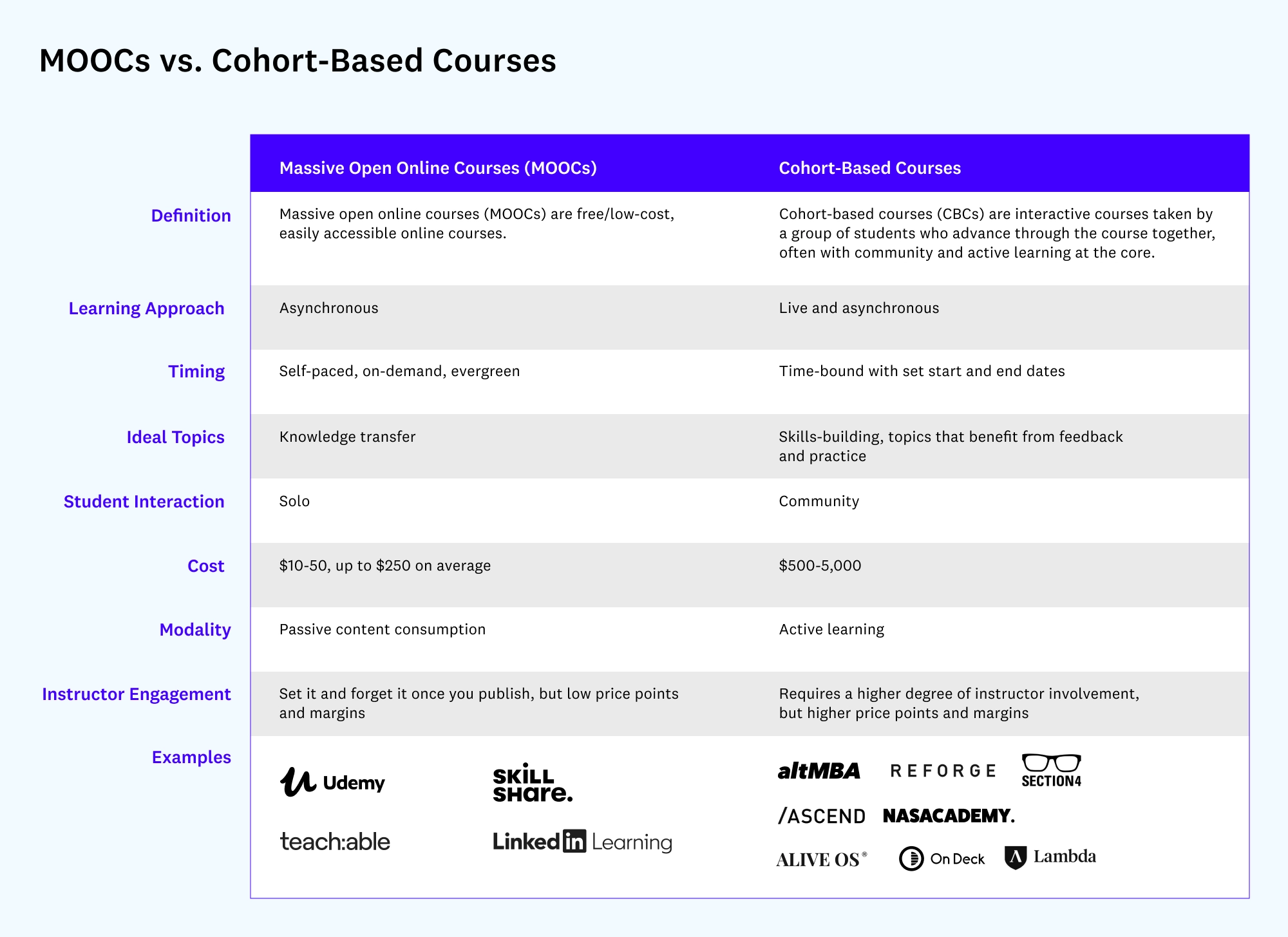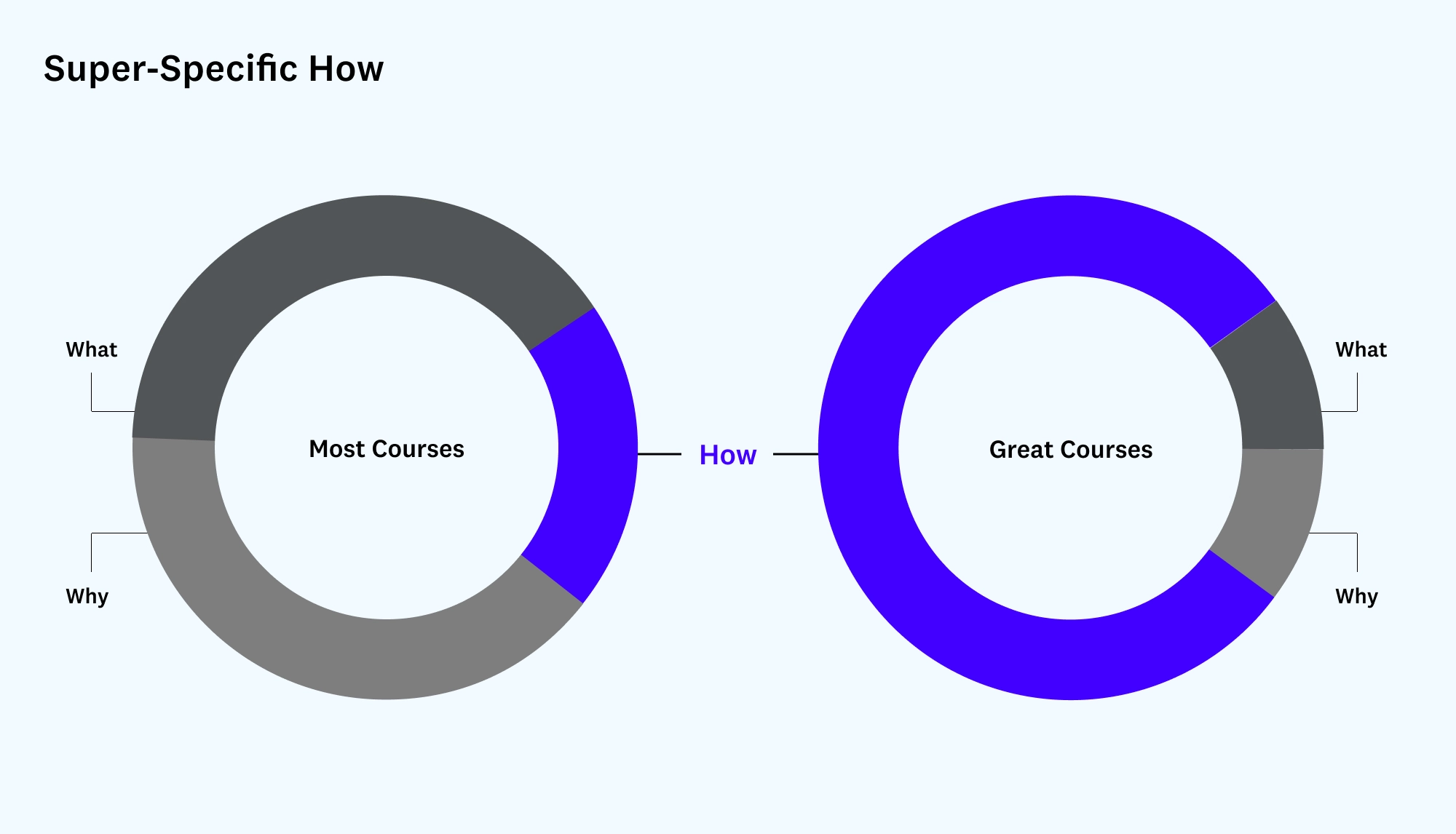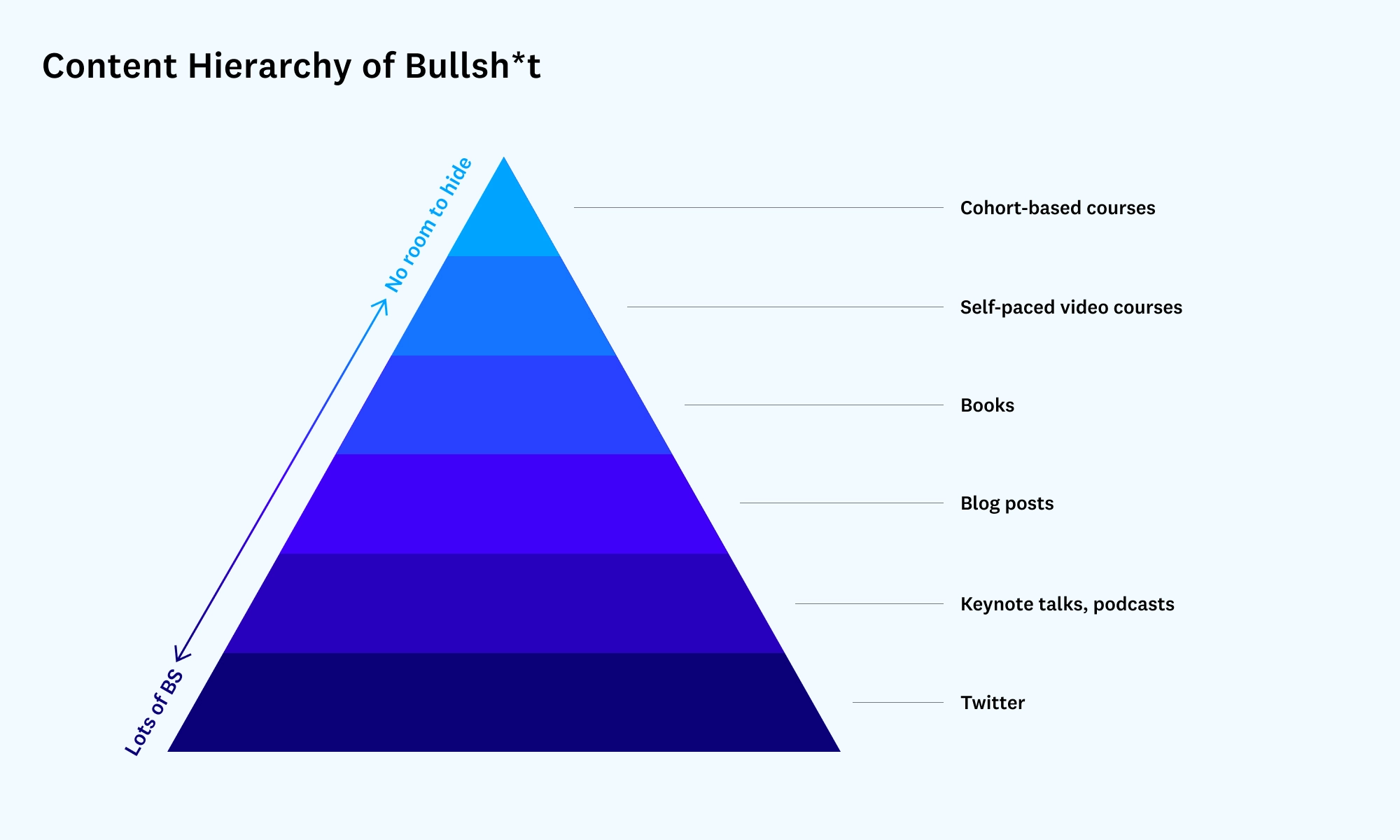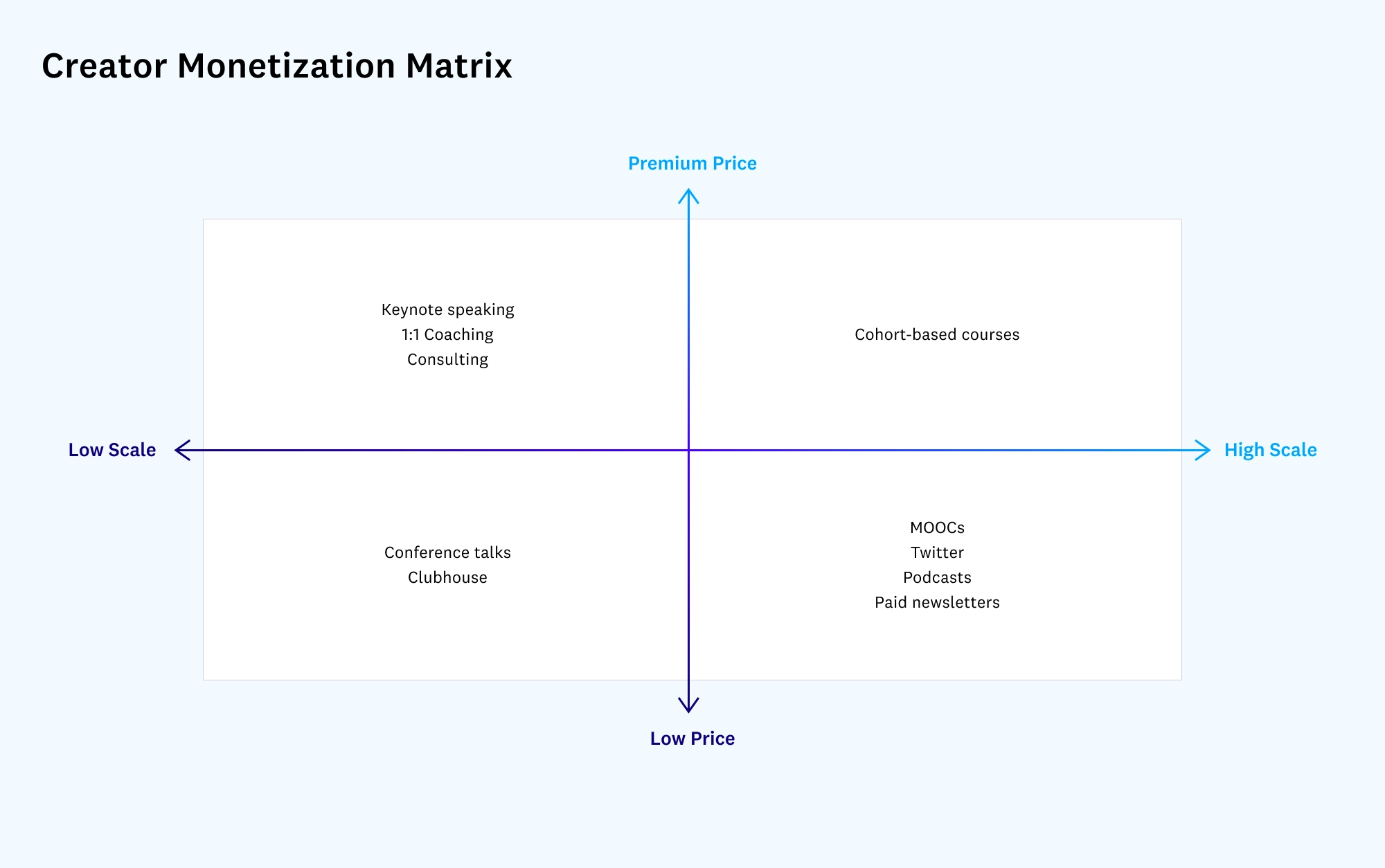In Online Ed Content Is No Longer King - Cohorts Are - Essay
# Information
- Source: Wes Kao
- Tags: #content #education
- Notes: Miscellaneous Notes/Literature Notes/In Online Ed Content Is No Longer King - Cohorts Are - Literature Notes
# Highlights
post-content age
educational content is cheap and abundant on YouTube, in newsletters, on blogs, and on social media.
In addition, dozens of accelerators, incubators, low-cost or free online courses, and alternative education programs have popped up to serve working professionals who want to learn.
it’s become nearly impossible for instructors to break out — let alone make a living — off their expertise, as they’ve been told they can.
most learners are actually worse off for all this cheap, abundant content — it’s become clear over the years that ==more access does not translate to more engagement.==
Many of the online course providers that gained prominence in the aughts sold the pretense that customers could learn anything, but relied on the ==learners’ willpower and motivation== to stick through a course. It’s a familiar pattern in other self-directed programs, too: Anyone can access a workout and diet plan, but very few actually stick with it long enough to see results.
Similarly, MOOCs — the massively open online courses that were popularized in the 2010s and continue in other modern forms today — offer evergreen, on-demand, recorded videos, often with a defined syllabus program. But their completion rate, as has been widely reported, is just ==3 to 6 percent==
The key difference between this phase of online ed and the MOOCs in the past decade? ==They are engaging and real-time, not just self-paced, and involve community-driven, active learning, as opposed to solo, passive content consumption. ==Cohort-based courses have a fixed start and end date, enforcing the real-time aspect and creating a scarcity within the abundance of content out there, and are often taught live. It’s the equivalent of participating in a college discussion seminar — taught by an expert in the field, unconstrained by geography or school rank — as opposed to watching a static video. And, importantly, there’s a built-in social contract in the form of the cohort.
# MOOCs v.s. CBCs: The shift from content to communities
But while these platforms provided access to both creators and learners, they didn’t deliver on the promise of ==student transformation. ==
Reasons why this pledge was naive:
- MOOCs are asynchronous and self-paced.
- MOOCs’ low (or no) cost colors the perception of quality.
- MOOCs convey “knowledge transfer,” but not necessarily higher-order skills.
MOOCs are great for subjects that are primarily “knowledge transfer,” such as how to sort data in Excel or other such skills. But ==they’re not great for higher-order skills==—those that require analysis, evaluation, synthesis, judgment, and creativity. Continuing with the Excel example, a higher-order version might involve how to segment the data strategically to look for patterns and arrive at a recommendation.
To summarize: On many MOOC platforms, the dominant learning modality is ==passive content consumption==; there’s no interaction or real community; and there’s no time constraint. All this amounts to a tiny percentage of learners who actually follow through.
# The case for cohort-based courses

# CBCs focus on active, hands-on learning
Students have to put in more effort through this format; they’ll stumble and make mistakes. While this is inarguably harder than listening to a charismatic “sage on stage” lecturer — where some students in the same study even perceived themselves to be retaining more knowledge when taught by “superstar lecturers” than they actually were — the research showed students actually learned more from the hands-on experience.

From the professional’s standpoint, cohort-based courses also bring the network benefits of startup accelerators to a wider market. ==The value in accelerators isn’t just content, it’s community.==
# Live, bi-directional learning leads to more accountability
In his book Cooperative Learning, the clinical psychologist and professor of psychology Spencer Kagan argues that the single most powerful approach to comprehension and retention is ==interactive processing, which occurs when “students engage in interaction with partners or teammates over the content.”== Part of the reason that this approach is so powerful is that classroom discussions and debates produce new ideas and points of view; that back-and-forth holds student attention in a way that no lecture can.
Another reason cohort-based courses can have more accountability is that they are bi-directional, as opposed to one-way, meaning there’s an exchange of knowledge between the instructor and students, as well as students with fellow students. ==It’s a dialogue, not a static lecture.==

Studies also show that what psychologists and neuroscientists call ==“interleaving” learning — where instructors mix different topics, ideas, and activities together during study, forcing students to intentionally switch between them rather than focusing on a single subject — can result in better learning outcomes for students.== A Brazilian jiu jitsu athlete, for instance, alternates practice between chokes, locks, escapes, and take-downs. Cohort-based courses are inherently about interleaving, giving students a chance to engage in different modalities — breakouts, role-playing, discussions, debates — with the instructor, coaches, and each other.
# Community building improves learning outcomes through social features
When designing cohort-based courses, I also deeply researched institutions outside education — the military, dance-a-thons, Crossfit, and even cults — to understand the motivation of groups. All of these were “sticky” for their participants (for better or worse). But where most traditional education forces students to learn, it’s clear that continuing education and adult learning must be compelling and carrot-driven, not stick-driven.
Why pay $750 to $5,000 for a cohort-based course when you can take a MOOC for $10 to 50?
Cohort-based courses self-select for learners who are willing to (and can) pay a premium for the perceived quality of content and follow-through. Most learners likely need the accountability and urgency that comes from the time constraints of a live course (with a clear beginning and end date), and from learning with a peer group.
# A new model for creator monetization
monetizing their expertise is really hard, especially if they don’t have existing followings or networks.
traditional social platforms — Instagram, TikTok, Twitter — create a division between the activities intended to monetize and those meant for community building. Creators give away valuable content, but most don’t have the volume needed to make a living from advertising alone.
Cohort-based courses provide a compelling way to monetize their expertise directly — and without requiring volume. It may therefore be the next phase of creator monetization, not just for classic educators, as more “knowledge” influencers run cohort-based courses. Cohort-based learning opens up a new quadrant of creator monetization:

- Instructors can make a healthy amount of money
- Creators get more leverage with a productized offering
- Consumers get more payoff, creators get higher monetization potential and scalability